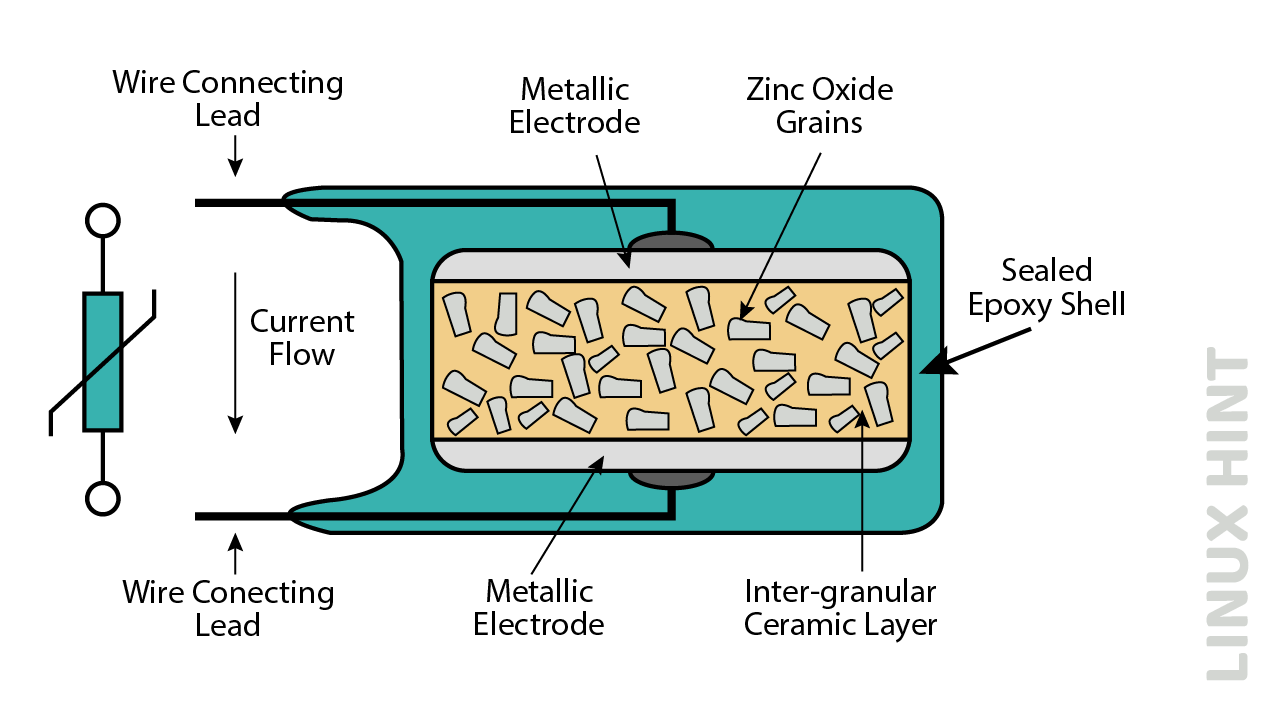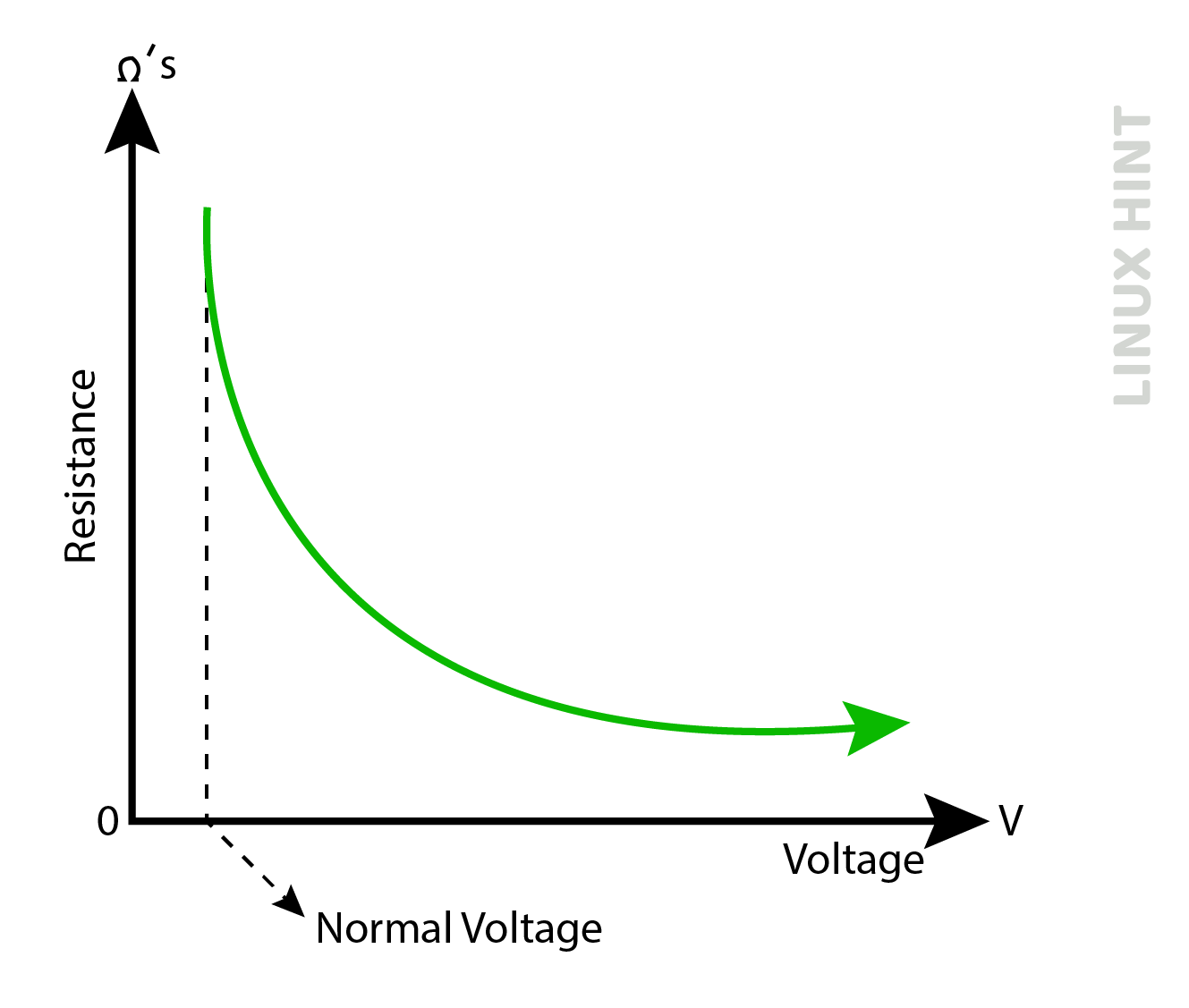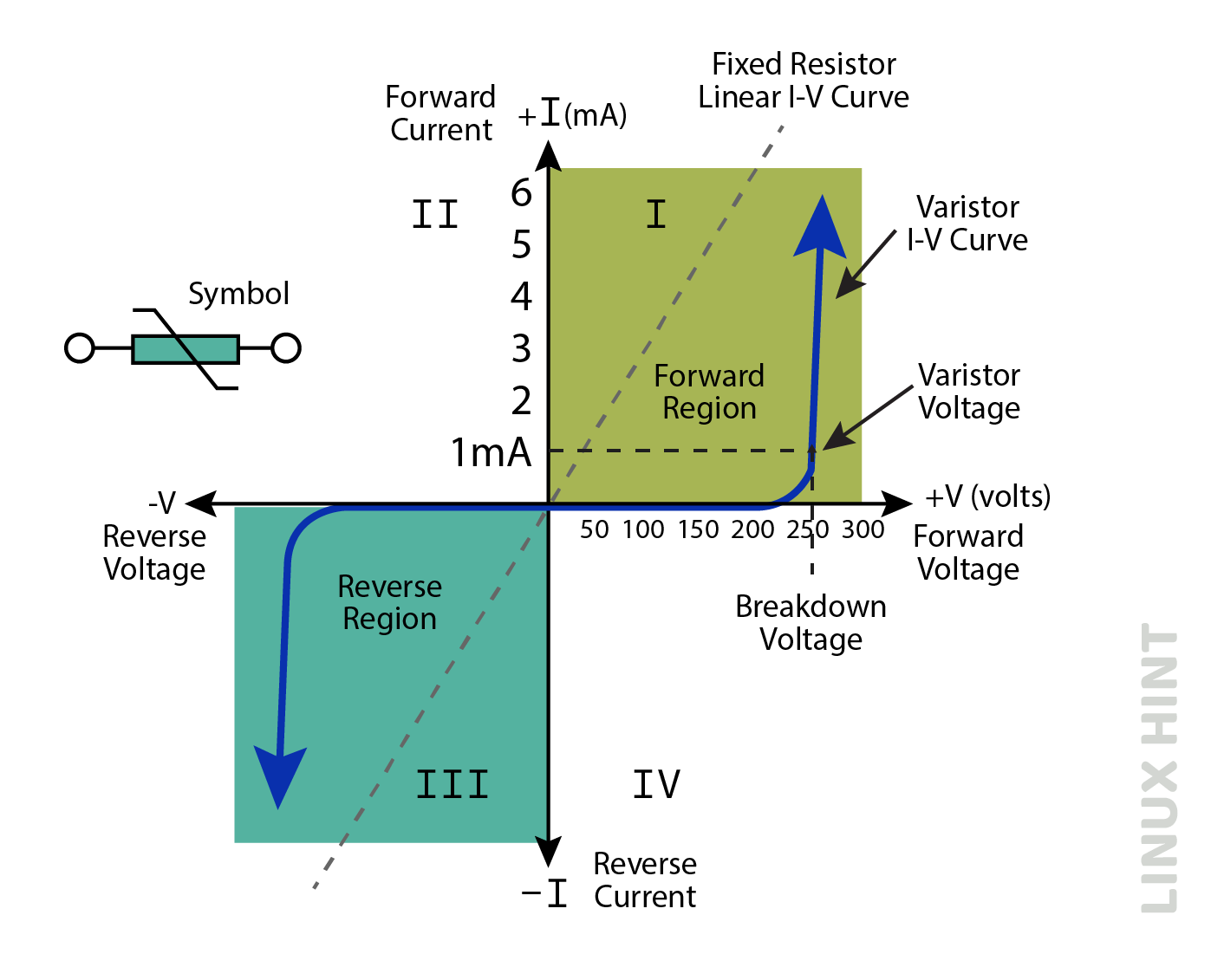What is Metal Oxide Varistor?
The term ‘varistor’ is a short form of variable resistor. Therefore, resistor values will be subject to change with external conditions.
Metal oxide varistors are voltage dependent resistors whose resistance falls with increase in voltage across them. Varistor is formed from two words: variable and resistor. However, these types of variable resistors cannot be varied manually. Varistors change their resistances automatically with an increase in voltages.
Construction of Metal Oxide Varistors
Varistors consist of two metallic electrodes and metallic oxide compounds in powdered form such as zinc oxide or cobalt oxide and so on. The metallic oxide grains act like PN junctions of semiconductor materials with each other. When voltage is applied across electrodes, varistors start conducting current and conduction stops as soon as the external voltage is removed from electrodes.
Operating Principle of Metal Oxide Varistors
When electric voltages spike or electrical power in a network change instantly in an electrical circuit, these disturbances are known as transients. The voltage magnitude jumps to several thousand volts in a short interval and can severely damage an electric circuit. Transient in AC signal are shown below:
Varistors decrease their resistance as soon as the voltage rises and therefore act to provide an alternative minimum resistance path for the voltage spike. The only limitation in the case of MOVs is that they are suitable for short interval transients. They are not designed for long duration of transients and degrade their characteristics when exposed to repeated or long duration of transients.
Varistor Static Resistance Curve
Metal oxide varistors show inverse relation with applied voltage. The resistance decreases as voltage increases. When voltage reaches maximum value, resistance attains the minimum value.
Varistor V-I Characteristics Curve
Linear resistors follow a straight-line pattern but varistors do not show the linear behavior as their resistance falls with increase in voltage.
The characteristic curves show bidirectional behavior of varistors, and the curve resembles characteristics of two Zener diodes connected from back-to-back. When varistors stop conduction, the curve shifts to linear trend in off state. During conduction, the curve shows non-linear behavior.
Varistor Capacitance & Clamping Voltages
The two electrodes along with the intermediate metal oxide medium of the varistor resemble a capacitor. The medium becomes dielectric and varistors act as capacitors in their non-conduction modes.
MOVs enter conduction mode above clamping voltage values and do not conduct below clamping voltages. The clamping voltage can be defined as the dc voltage level that would allow a flow of 1mA current through the varistor body. This clamping voltage level decides on the conduction mode of varistors.
In DC voltage, the capacitance effect does not affect much, and it remains within limits below the clamping voltage level. But in AC voltage cases, a phenomenon of leakage current. The leakage reactance drops with increase in frequency and is expressed as in capacitor case below:
Varistor Applications
Varistors can be used in any electrical circuit which is exposed to voltage spikes. It is added in parallel arrangement with the electrical circuit being protected. Below are some of the major applications of varistors:
Conclusion
Varistors protect electrical equipment from over voltage spikes. They protect delicate electrical networks from transients, just like circuit breakers and fuses protecting from over-currents. They are available in a range of 10 to 1000 volts designs, both for AC and DC supplies.






